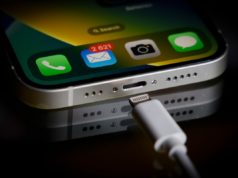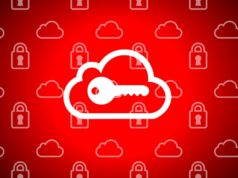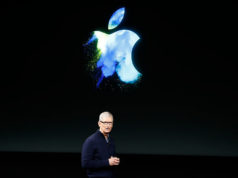People with iPhones, iPads and other iOS devices will be able to boost their online security a bit more, now that Apple has enabled two-factor authentication for its iMessage and FaceTime communication tools. The extra security measure will reduce the chances that hackers can access user accounts, even if they have people’s usernames and passwords.
Apple began offering the option for two-step verification security for iTunes and iCloud users in 2013. People who enable the measure for those services must enter their usernames and passwords as well as separate, one-time verification codes.
“Your Apple ID is the key to many things you do with Apple,” according to the company’s support page for two-step verification. “It’s important that only you have the ability to access your account details, update your password, access the data you store and keep up to date with iCloud, or make iTunes and App Store purchases with your account. Two-step verification is a feature you can use to keep your Apple ID and personal information as secure as possible.”
Security Turning Point: iCloud Leak
Following last year’s cyberattack on a number of celebrities’ iCloud accounts — accompanied by the public release of some victims’ nude photos — Apple CEO Tim Cook said the company would take more steps to improve the security of its services. In addition to sending notifications to users whenever Apple detected that someone was trying to change the passwords to their accounts or log in with new devices, those steps would include broader use of two-factor authentication, Cook said.
According to Apple’s investigation of the iCloud photo incident, “certain celebrity accounts were compromised by a very targeted attack on user names, passwords and security questions, a practice that has become all too common on the Internet. None of the cases we have investigated has resulted from any breach in any of Apple’s systems including iCloud or Find my iPhone.”
A statement from Apple following the incident added, “To protect against this type of attack, we advise all users to always use a strong password and enable two-step verification.”
Still Problems Until Recently
Despite Cook’s assurances, some Apple services were still showing signs of security weakness through this week, according to an article published Thursday on Medium. In the article, writer Dani Grant described her experiences — illustrated with screenshots — of trying to log into various Apple services and finding that her two-factor authentication did not always generate security prompts when she tried to access those services.
With Apple’s latest announcement about adding two-factor authentication for iMessage and FaceTime, that issue appears to have been resolved. The Medium article has now been updated, noting that “Apple has since patched the problem.”
When contacted, an Apple spokeperson verified the company has now enabled two-factor authentication for iMessage and FaceTime but did not offer any further comment. Users should pay attention to Apple’s expansion of two-factor authentication, even if they find the added steps to be a hassle, according to an article in The Washington Post.
“If you’re an Apple user at all, your Apple ID is the key to a lot of information about you — pretty much everything that the company has about you, including your payment information, whatever data you may have stored in Apple’s cloud and your personal communication,” the article noted. “Protecting that is worth the extra 10-15 seconds — I just timed it for you — that it takes to get and use a unique code sent to your phone.”







